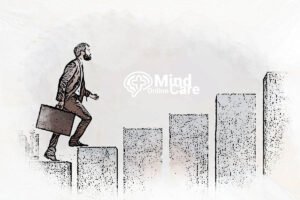How deeply does our mental well-being influence our lives? As we navigate the complexities of modern existence, it’s crucial to recognize the profound impact of mental health on our overall quality of life. From our relationships and productivity to our physical well-being and societal contributions, mental health is the foundation upon which we build our lives. In this comprehensive exploration, we’ll uncover the true significance of mental health and its far-reaching implications, empowering us to prioritize our psychological and emotional well-being.
Key Takeaways
- Mental health encompasses our emotional, psychological, and social well-being, affecting how we think, feel, and behave.
- Poor mental health can lead to physical, social, and personal challenges, underscoring the critical importance of addressing mental health issues.
- Mental health disorders are more common than many realize, with over 1 in 5 U.S. adults living with a mental illness.
- Factors like adverse experiences, medical conditions, and substance use can contribute to the development of mental health disorders.
- Addressing mental health at the individual and societal levels is a pressing public health concern, requiring prevention and effective interventions.
What is Mental Health and Why It Matters
Mental health encompasses our emotional, psychological, and social well-being. It influences how we think, feel, and act, and helps us manage stress, relate to others, and make healthy choices. Mental health and physical health are equally important components of our overall health. For instance, depression can increase the risk of various physical health problems, such as diabetes, heart disease, and stroke. Conversely, the presence of chronic physical conditions can also increase the likelihood of mental illness. Our mental health can fluctuate over time, depending on a multitude of factors.
Mental Health Definition and Components
According to the National Institute of Mental Health, nearly one-in-five adults in the United States live with a mental illness. Serious mental illnesses (SMIs) can significantly interfere with a person’s life and ability to function. Early warning signs of mental health issues may include changes in sleeping or eating patterns, feelings of helplessness or hopelessness, and severe mood swings. With early and consistent treatment, often a combination of medication and psychotherapy, it is possible to manage mental health conditions and lead a meaningful, productive life.
Relationship Between Mental and Physical Health
The connection between mental and physical health is well-established. For example, consistently poor sleep is associated with anxiety, depression, and other mental health conditions. Conversely, mental health conditions can also impact physical health. The “Comprehensive Mental Health Action Plan 2013-2030” aims to improve mental health by providing comprehensive, integrated, and responsive community-based care, implementing promotion and prevention strategies, and strengthening information systems, evidence, and research. However, the Mental Health Atlas 2020 analysis by the World Health Organization (WHO) showed insufficient progress by countries in meeting the targets set in the action plan, highlighting the need for innovative and scalable solutions to address the gap in care for common mental health conditions.
“Promoting and protecting mental health at work is gaining importance, with strategies such as legislation, manager training, and interventions to support workers being key focus areas.”
Prevalence and Causes of Mental Illness
Mental illnesses are alarmingly common in the United States. In 2022, an estimated 23.1% of all U.S. adults, totaling 59.3 million individuals, were affected by any mental illness (AMI). The prevalence of AMI was higher among females (26.4%) compared to males (19.7%), and young adults aged 18-25 years had the highest prevalence of AMI (36.2%) among U.S. adults. The prevalence of AMI was highest among adults reporting two or more races (35.2%), followed by White adults (24.6%).
Concerning serious mental illness (SMI), which affects 6.0% of all U.S. adults, or 15.4 million individuals, the observed prevalence was higher among females (7.0%) than males (4.0%). Once again, young adults aged 18-25 years had the highest prevalence of SMI (11.6%) compared to other age groups. The prevalence of SMI was highest among adults reporting two or more races (11.8%), followed by American Indian/Alaskan Native adults (7.3%).
Mental illnesses can be caused by a variety of factors, including adverse childhood experiences, chronic medical conditions, biological factors, substance use, and feelings of loneliness or isolation. It’s important to note that there is no single cause for mental illness, and a combination of these contributing factors can often lead to the development of mental health disorders.
| Condition | Prevalence in the U.S. |
|---|---|
| Any Mental Illness (AMI) | 23.1% of adults |
| Serious Mental Illness (SMI) | 6.0% of adults |
| Mental Disorders in Adolescents | 49.5% of those aged 13-18 |
The data used in this section is based on the 2022 National Survey on Drug Use and Health (NSDUH) and the National Comorbidity Survey Adolescent Supplement (NCS-A), providing a comprehensive snapshot of the prevalence of mental illness in the United States.
impact of mental health on Various Aspects of Life
Poor mental health can significantly impact an individual’s ability to lead a fulfilling life and fulfill their academic, professional, and social responsibilities. Mental health challenges often place substantial emotional and financial strain on families, leading to social isolation, relationship breakdowns, and even childhood neglect. Moreover, there is a clear connection between mental health issues and substance abuse, with 1 in 4 people with a serious mental illness also grappling with a substance use disorder.
Mental health problems can also greatly influence an individual’s educational success. Students with mental health challenges often face higher suspension and expulsion rates, as well as increased dropout rates. Similarly, in the workplace, mental health issues can reduce concentration, productivity, and job satisfaction, potentially leading to job loss, loss of health insurance, and financial instability.
Effects on Relationships and Social Functioning
Poor mental health can strain personal relationships and impair an individual’s ability to engage in social activities. Symptoms such as withdrawal, irritability, and difficulty expressing emotions can make it challenging to maintain healthy, fulfilling connections with family and friends. This, in turn, can exacerbate feelings of loneliness and further contribute to the deterioration of mental well-being.
Connection to Substance Abuse and Addiction
Individuals with mental health issues often turn to substance abuse as a coping mechanism, leading to a vicious cycle of addiction and worsening mental health. The co-occurrence of mental illness and substance use disorders is well-documented, with research indicating that 1 in 4 people with a serious mental illness also have a substance use disorder. Addressing both the mental health and substance abuse components is crucial for effective treatment and recovery.
Impact on Education and Career
Mental health problems can significantly impact an individual’s educational and professional success. Students with mental health challenges often face higher suspension and expulsion rates, as well as increased dropout rates, limiting their academic and career opportunities. In the workplace, mental health issues can reduce concentration, productivity, and job satisfaction, potentially leading to job loss, loss of health insurance, and financial instability.
“Nurturing our mental health is just as important as caring for our physical well-being. By addressing the impact of mental health on various aspects of life, we can empower individuals to lead more fulfilling, productive, and socially engaged lives.”
Mental Health as a Public Health Concern
Mental health is a critical public health issue, as the prevalence of mental health issues that affect individuals’ physical and social well-being makes it integral to achieving community health goals. Public health professionals play a vital role in combating mental health challenges by advocating for prevention and developing effective interventions.
Role of Public Health in Mental Health Promotion
Public health agencies work to promote mental health awareness, reduce stigma, and ensure access to quality mental healthcare services. They collaborate with healthcare providers, community organizations, and policymakers to implement strategies that address the mental health needs of the population.
- Developing and disseminating educational resources on mental health and well-being
- Advocating for increased funding and resources for mental health services
- Implementing programs that focus on early identification and intervention of mental health issues
- Promoting the integration of mental health services into primary care and other healthcare settings
Mental Health Disparities in Marginalized Communities
Regrettably, marginalized communities consistently experience worse mental health outcomes than other communities. Factors like lack of insurance, discrimination, and cultural incompetency among providers create significant barriers to accessing mental healthcare. Strategies to address these disparities are crucial for recognizing and prioritizing mental health as a public health concern nationwide.
| Statistic | Value |
|---|---|
| Estimated revenue of Offices of Mental Health Practitioners (except Physicians) | Increased by 104.0% from $7.9 billion in 2015 to $16.2 billion in 2021 |
| Revenue for Government-owned Psychiatric and Substance Abuse Hospitals | Increased by 12.0% from $12.3 billion to $13.8 billion during the same period |
| Misused opioids in 2021 | 3.3% of the U.S. population ages 12 and older, totaling 9.2 million people |
| U.S. adults ages 18 and older reported having had a mental illness in the past year | Nearly 1 in 4 in 2021 |
By addressing mental health as a public health issue and working to reduce disparities, we can create a more equitable and supportive environment for individuals and communities to thrive.
Interplay Between Mental and Physical Health
The relationship between mental and physical health is a complex and intricate one. While the mind and body are often viewed as separate entities, they are in fact deeply interconnected, with each profoundly impacting the other. Good mental health can positively influence our physical well-being, while poor mental health can have adverse effects on our physical health.
Mental Health Conditions and Physical Illnesses
Chronic mental health conditions, such as depression and anxiety, have been linked to a higher risk of physical illnesses, including diabetes, asthma, cancer, cardiovascular disease, and arthritis. Individuals with mental health disorders are also more likely to experience sleep problems, smoking, and difficulty accessing adequate healthcare, all of which can exacerbate physical health complications.
Schizophrenia, for instance, has been associated with an increased risk of heart and respiratory diseases, highlighting the profound interplay between mental and physical well-being. Mental health conditions can make managing chronic physical illnesses more challenging, further compounding the issue.
Physical Health Problems and Mental Well-being
On the flip side, physical health problems can also negatively impact mental well-being. Conditions like psoriasis, cancer, and heart attacks have been shown to lead to mental health issues such as depression and anxiety. Nearly one in three individuals with a long-term physical health condition also experiences a mental health issue, specifically depression or anxiety.
The reasons for this interplay are multifaceted, including genetic factors, low motivation, difficulties with concentration and planning, lack of support for healthier behaviors, and decreased likelihood of receiving medical assistance for physical symptoms among those with mental illnesses.
| Mental Health Condition | Associated Physical Illnesses |
|---|---|
| Depression | Diabetes, heart disease, cancer, stroke |
| Anxiety | Respiratory issues, digestive problems, chronic pain |
| Schizophrenia | Cardiovascular disease, respiratory diseases |
Maintaining a balance between physical and mental well-being is crucial for overall health and wellness. Regular exercise, a balanced diet, and proactive engagement with healthcare professionals can all contribute to the harmonious integration of our mental and physical health.
Conclusion
To improve our overall well-being, it is essential to prioritize both our mental and physical health. Effective strategies include regular exercise, maintaining a nutritious diet, avoiding harmful substances, getting sufficient sleep, practicing relaxation techniques, and seeking support from our loved ones. By addressing mental health as a crucial public health concern and providing accessible, culturally competent care, we can promote the overall well-being of individuals and communities across the United States.
Recognizing the profound impact of mental health on all aspects of our lives is a crucial step towards understanding and addressing this critical public health issue. The statistics reveal the troubling prevalence of mental health disorders, particularly among our youth, and the need for comprehensive solutions. By prioritizing strategies for improving mental and physical health, and emphasizing the importance of addressing mental health, we can work towards promoting overall well-being for all
As a society, we must continue to destigmatize mental health, provide equitable access to care, and empower individuals to take charge of their well-being. By working together, we can create a future where mental health is truly valued and supported, leading to healthier, more vibrant communities.






